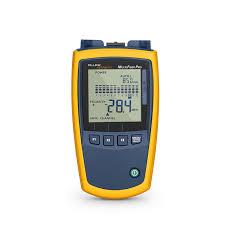Optical Power Meter Market Overview Highlights Key Growth Areas and Applications

The optical power meter market has gained considerable traction in recent years, thanks to the global surge in fiber-optic network expansion and digital infrastructure development. These meters, vital for testing and maintaining optical signal strength, are witnessing increased demand in telecommunications, data centers, defense, and industrial automation. This market overview explores the essential components, applications, and growth avenues of optical power meters as the world transitions toward high-speed, fiber-based connectivity.
What Is an Optical Power Meter?
An optical power meter is a precision instrument used to measure the power of an optical signal in fiber-optic networks. These devices are crucial for installation, maintenance, and troubleshooting activities in fiber systems. By accurately determining the signal loss or gain across connections, they ensure reliable communication performance and system integrity.
Modern optical power meters support a wide range of wavelengths, typically from 800 nm to 1700 nm, and can be handheld, benchtop, or modular in design. Their portability and advanced features make them indispensable in field testing and laboratory environments.
Key Market Segments
By Product Type:
-
Handheld Power Meters: Popular in fieldwork for their compact size and ease of use.
-
Benchtop Power Meters: Used in labs for high-precision testing.
-
Modular Devices: Preferred in automated or multi-device testing environments.
By Wavelength Range:
-
Single-Wavelength Meters
-
Multi-Wavelength Meters
Multi-wavelength meters are increasingly preferred for their flexibility in testing various optical systems and components.
By End-Use Industry:
-
Telecommunication
-
Data Centers
-
Defense and Aerospace
-
Healthcare and Biomedical
-
Industrial Automation
While telecommunications remain the leading consumer, sectors like healthcare and smart manufacturing are emerging as promising users due to rising adoption of fiber-optic sensors and medical lasers.
Key Market Drivers
-
Global Fiber Deployment:
The surge in fiber-to-the-home (FTTH), 5G backhaul, and high-speed broadband projects is directly propelling the need for precise testing instruments like optical power meters. -
Technological Advancements:
Newer models now feature wireless connectivity, touch-screen interfaces, and AI-enabled data analysis—boosting adoption among modern technicians. -
Diverse Applications:
Beyond telecom, the use of fiber optics in military communication systems, medical diagnostics, and industrial automation is expanding the utility of these meters. -
Increased Demand for Portable Devices:
Field engineers and service providers prefer portable, ruggedized meters that offer flexibility without compromising accuracy, leading to innovation in product design.
Regional Market Overview
North America:
A mature market driven by rapid 5G rollout, advanced data centers, and stringent network quality standards. The U.S. and Canada lead in adopting next-generation optical testing solutions.
Europe:
Growth is supported by smart city initiatives and government investments in high-speed connectivity. Countries like Germany, the UK, and France are strong contributors.
Asia-Pacific:
The fastest-growing region, led by China, India, Japan, and South Korea. Massive investments in broadband infrastructure, urban expansion, and domestic manufacturing are fueling demand.
Latin America and Middle East & Africa:
Although smaller in size, these markets show steady growth potential. Telecom upgrades and digital initiatives are gradually increasing the uptake of optical testing equipment.
Competitive Landscape
The optical power meter market features a mix of global giants and regional players. Some of the leading companies include:
-
VIAVI Solutions Inc.
-
EXFO Inc.
-
Anritsu Corporation
-
Thorlabs, Inc.
-
Yokogawa Electric Corporation
These players focus on technological innovation, cost-effective product lines, and expanding global footprints. Startups and smaller companies are gaining traction by offering niche or budget-friendly solutions for emerging markets.
Market Challenges
-
Price Sensitivity: Especially in developing countries, low-cost alternatives often compete with high-end, feature-rich devices.
-
Training and Skill Gaps: Effective use of advanced meters requires training, which is lacking in some regions.
-
Device Calibration and Standardization: Inconsistency in calibration practices affects measurement accuracy and market trust.
Future Outlook
The future of the optical power meter market looks promising. Increasing digitalization, growing use of AI in network diagnostics, and rising applications in non-telecom sectors will continue to shape its trajectory. Manufacturers are expected to focus on developing more intelligent, compact, and connected solutions to cater to evolving user needs.
Conclusion
The optical power meter market is witnessing robust growth due to global fiber-optic infrastructure expansion and the broadening scope of optical technology applications. As industries rely more heavily on high-speed, fiber-enabled systems, the role of precise and reliable power measurement tools becomes even more crucial. With technological innovation and regional development paving the way, the market is set for sustained growth in the coming years.
- Art
- Causes
- Crafts
- Dance
- Drinks
- Film
- Fitness
- Food
- Games
- Gardening
- Health
- Home
- Literature
- Music
- Networking
- Other
- Party
- Religion
- Shopping
- Sports
- Theater
- Wellness


